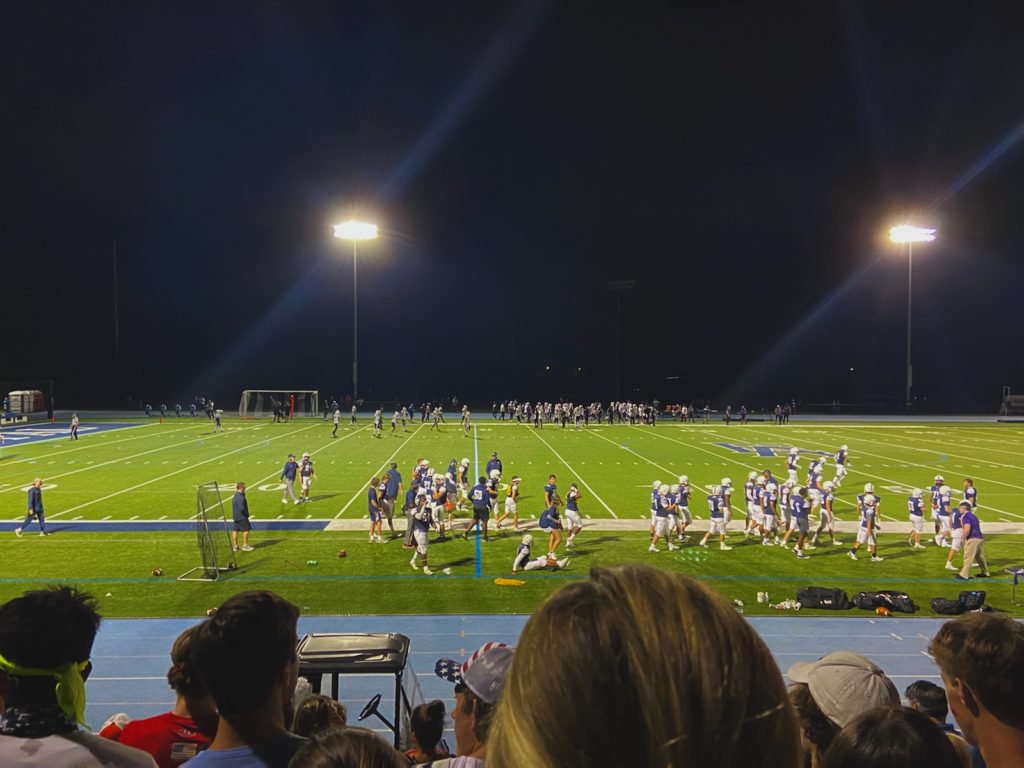Elle du Pont ‘25
Daylight Saving Time impedes global communication, poses notable health risks, and acts as a general nuisance to the national population.
A system created to conserve energy in the World Wars, Daylight Saving Time ironically squanders more resources than it saves. A study done by the National Bureau of Economic Research showed that people in Indiana paid $9 million more on their electricity bills in 2008 due to an increase in residential electricity demand during Daylight Saving Time. It cannot even complete its original job of energy conservation.

Photo Courtesy of Gianna Trala ’23
In addition, Daylight Saving Time hinders global communication. In an increasingly interconnected world where communication across time zones is essential, switching the national time twice a year is more of a hindrance than a help. Of the 195 countries recognized by the United Nations, only 70 use Daylight Saving Time, making up 35% of all member states. Many countries that still implement the practice, including the United States, are discussing eliminating it. In May of 2021, senators from numerous states led a bipartisan effort to instate Daylight Saving Time all year round. Although different from disposing of it all together, the idea of a fixed standard time remains the same.
The time switch itself is the main problem. The days and weeks following the time switch are consistently marked with health and industrial problems. According to the American Academy of Sleep Medicine, the number of traffic accidents, hospitalizations, and strokes surges in the days following Daylight Saving Time, due to loss of sleep and stress on the body. The change can also cause mental illnesses to act up, as disorders like the Seasonal Affective Disorder (SAD) are affected by the lack of sunlight.
Though Daylight Saving Time gives us more sunlight and time to be outside, its disadvantages far outweigh its benefits. Beyond the logistical and health impacts,, no one likes losing an hour of sleep, no matter how many studies are done or how much data is recorded. Hailey Deng ‘25 states, “I kind of understand the point of daylight savings, but I also think it’s kind of dumb, just because nobody else really does daylight savings and I don’t like losing sleep.”
Other than the serious medical and communication problems it causes, Daylight Saving Time is frustrating and confusing for people to switch back and forth. The human brain isn’t designed to calibrate to Daylight Saving Time, and the extra effort people exert to deal with it is entirely unnecessary. Upper School English teacher Lee Billmyer concurs, saying, “I’m in favor of not having it because it would save me, this technologically challenged person, from having to change the clock in my car.” Within the Episcopal Academy community, teachers and students alike, have somehow struggled with the effects of Daylight Saving Time.
There is no great advantage to Daylight Saving Time, at least not one that overshadows all of the problems it causes. We have to get rid of it, once and for all. Many groups, most recently the European Union, are moving on from Daylight Saving Time, and the United States should follow suit. The federal government is the only body with enough power to make the change, and it’s time it does so.